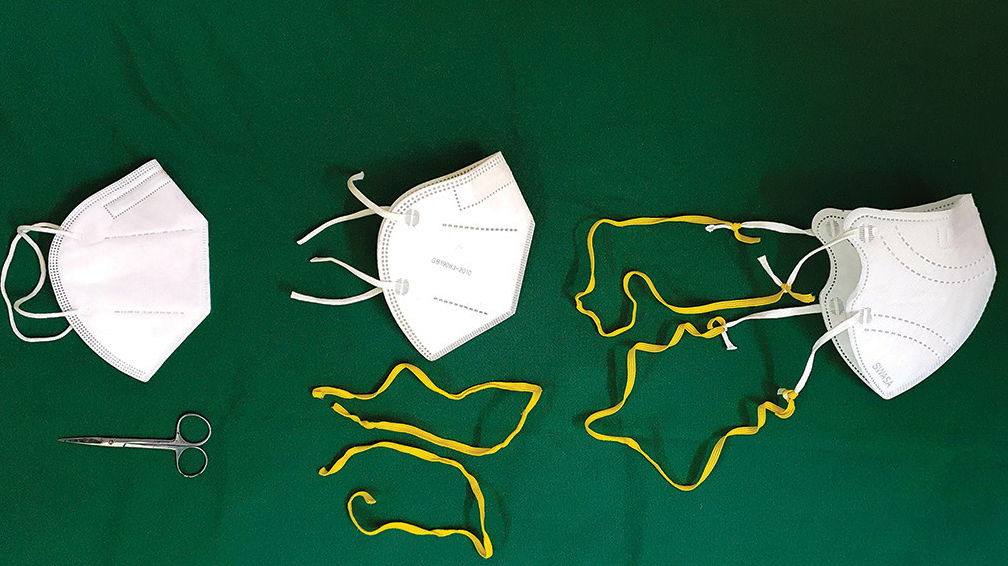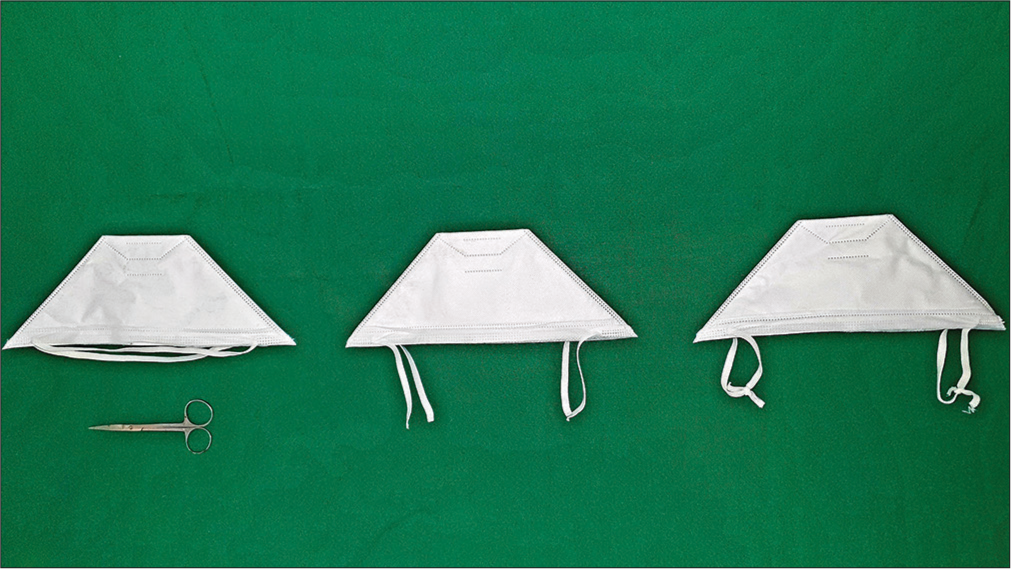Translate this page into:
A simple “cut and tie” method for converting earloop masks to overhead masks and vice versa to control the mask menace

*Corresponding author: Somesh Gupta, Department of Dermatology and Venereology, All India Institute of Medical Sciences, New Delhi, India. someshgupta@aiims.edu
-
Received: ,
Accepted: ,
How to cite this article: Mehta N, Khan I, Gupta S. A simple “cut and tie” method for converting earloop masks to overhead masks and vice versa to control the mask menace. CosmoDerma 2023;3:165.
PROBLEM
COVID-19 pandemic has led to widespread N95 mask usage and the menace of mask-related adverse effects.[1] Different people prefer different types of masks. Often health-care workers do not get to decide the type of mask they receive during their work. With the advent of COVID-19 vaccines, the budgetary allocation for appropriate masks is likely to decrease. Earloop masks cause pain, erosions, and macerations at the ear and slippage of spectacles due to the eversion of ears. Loop extenders and folding the loops on the spectacle partially alleviate these adverse effects, but contact and friction at the superior fold of earlobe persist.[2] Overhead masks lead to headache, lifting of hair, and pressure alopecia. Non-adjustable overhead masks also cause relatively more pressure at the nose and respiratory exertion compared to adjustable overhead and earloop masks.
SOLUTION
We present a simple “cut and tie” method to convert earloop masks to adjustable overhead masks and vice versa so that the masks can be specifically adapted to the user’s preference. To convert an earloop mask to an overhead mask, cut its loops in the middle, tie both sides of upper and lower ends with extra elastic piece [Figure 1 and Video 1]. Wear the mask and tie the elastic piece onto itself at the back of the head as per comfort. Alternatively, the beaded elastic of a used overhead mask can be used. Masks should not be reused but their elastic pieces can be reused. The resultant overhead mask gives a snug fit without any pressure on the ears. To convert an overhead mask into earloop mask, cut its elastic bands in the middle and tie upper and lower ends of each side [Figure 2 and Video 2]. The resultant earloop masks do not cause any pressure at the back of the head and less pressure at the nose.

- Conversion of earloop mask to overhead mask.

- Conversion of overhead mask to earloop mask.
Video 1:
Video 1:Conversion of earloop mask to overhead mask.Video 2:
Video 2:Conversion of overhead mask to earloop mask.Declaration of patient consent
Patient’s consent is not required as there are no patients in this study.
Conflicts of interest
There are no conflicts of interest.
Use of artificial intelligence (AI)-assisted technology for manuscript preparation
The authors confirm that there was no use of artificial intelligence (AI)-assisted technology for assisting in the writing or editing of the manuscript and no images were manipulated using AI.
Videos available online at
Financial support and sponsorship
Nil.
References
- Iatrogenic dermatitis in times of COVID-19: A pandemic within a pandemic. J Eur Acad Dermatol Venereol. 2020;34:e563-6.
- [CrossRef] [PubMed] [Google Scholar]
- Wearing the N95 mask with a plastic handle reduces pressure injury. J Am Acad Dermatol. 2020;82:e191-2.
- [CrossRef] [PubMed] [Google Scholar]





